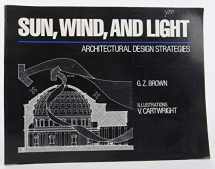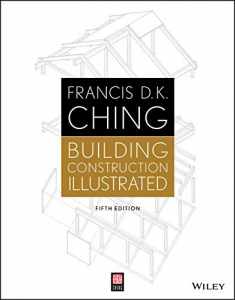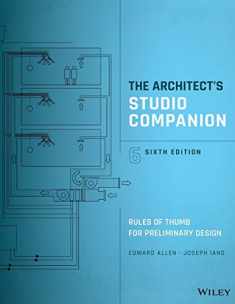
Sun, Wind, and Light: Architectural Design Strategies , Professional Ed.
Book details
Summary
Description
Sun, Wind, and Light: Architectural Design Strategies G. Z. Brown This book is for designers who want to consider the form-generating potential of sun, wind, and light in the earliest stages of the design process. It is designed to fit with the rapid, conceptual, exploratory, and synthetic thinking that characterizes the beginning of the design process. The book stresses the energy implications of using sun, wind, and light. However, it is organized by the architectural elements designers manipulate—streets, open spaces and buildings, rooms and courtyards, and walls, roofs, floors, and windows. These elements are discussed in terms of their organization—layered, elongated, dispersed, compact, and zoned—and their attributes—shape, orientation, enclosure, edge, and size. In addition, the contents are matched to the scale that is being considered—building groups, individual buildings, and building parts. Sun, Wind, and Light is divided into three parts: The Design Strategies section is intended to help the designer formulate the basic concept for a project. This section uses a one- or two-page format that contains a simple memorable statement of the strategy, a clear, concise explanation of the strategy, several provocative historical and contemporary architectural illustrations of the potential impact of the strategy on a building’s form and organization, and a rule of thumb that allows the designer to size elements instantly, without calculation. This format makes the strategies stimulating, fast to use, and easy to integrate with other design concerns. The Analysis Techniques section helps the designer define the context of the problem by understanding the sun, wind, and light resources of a particular site and climate, and how those resources can be used in a particular building to reduce the energy used for heating, cooling, and lighting. The third section, Strategies For Supplementing Passive Systems, addresses the ways design strategies can be supplemented with conventional heating, cooling, and lighting systems. The book is extensively referenced so that more detailed information can be located easily. It contains a glossary of energy-related terms so that it can be used effectively by those who are not energy experts. For easy retrieval of information, the book is indexed by subject, building, and architect, and by charts, graphs, and tables.


We would LOVE it if you could help us and other readers by reviewing the book
Book review





